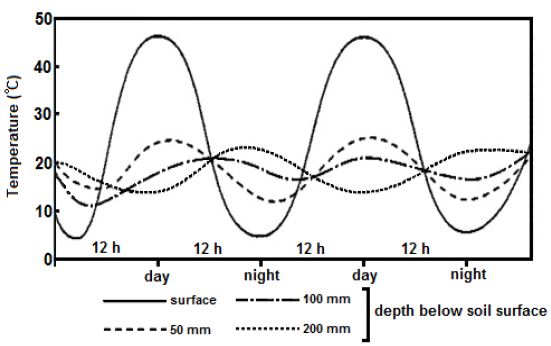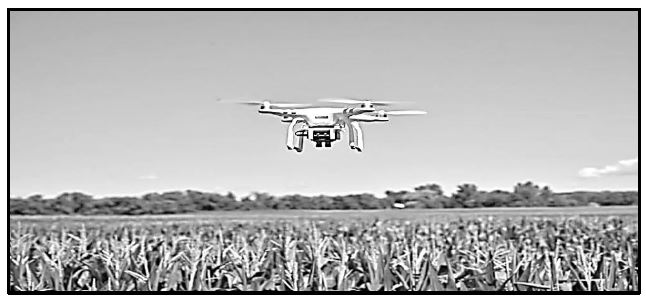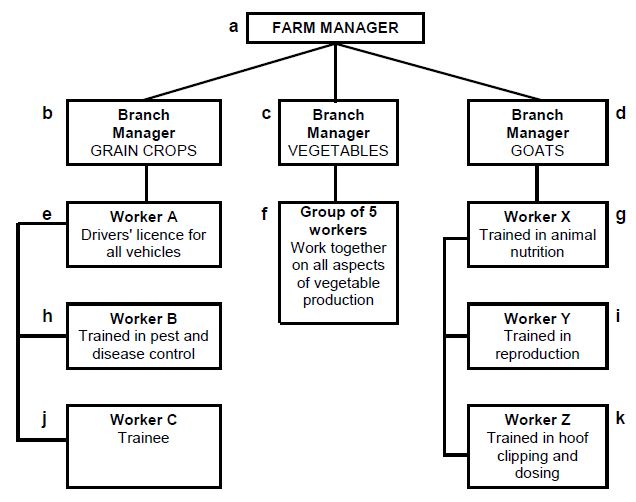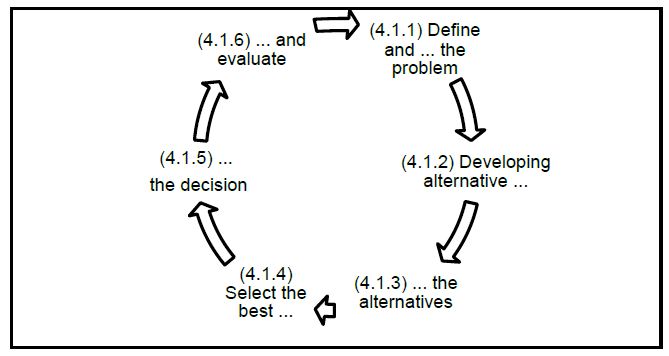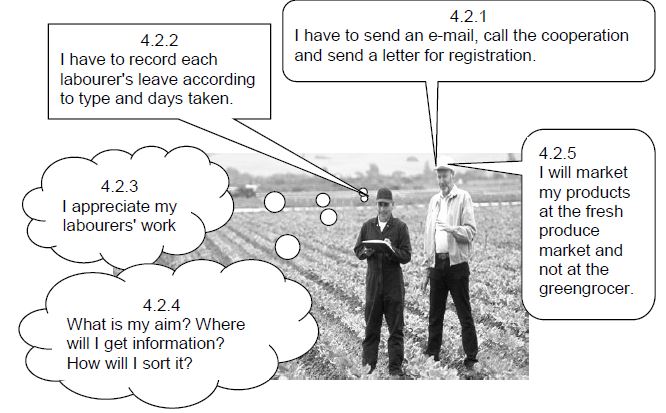AGRICULTURAL MANAGEMENT PRACTICES GRADE 12 QUESTIONS - NSC EXAMS PAST PAPERS AND MEMOS MAY/JUNE 2021
Share via Whatsapp Join our WhatsApp Group Join our Telegram GroupAGRICULTURAL MANAGEMENT PRACTICES
GRADE 12
NATIONAL SENIOR CERTIFICATE EXAMINATIONS
MAY/JUNE 2021
INSTRUCTIONS AND INFORMATION
- This paper consists of TWO sections.
- Answer ALL the questions in the ANSWER BOOK.
- Read the questions carefully and answer only what has been asked.
- Number the answers correctly according to the numbering system used in this question paper.
- You may use a non-programmable calculator.
- Start EACH question on a NEW page.
- Write neatly and legibly.
SECTION A
QUESTION 1
1.1 Various options are provided as possible answers to the following questions. Choose the answer and write only the letter (A–D) next to the question numbers (1.1.1 to 1.1.10) in the ANSWER BOOK, e.g. 1.1.11 D.
1.1.1 … is a function of agricultural marketing.
- Evaluation
- Storage
- Planning
- Decision making
1.1.2 The following are factors that influence the demand of the product:
- Usefulness of the product
- Profit margin of the product
- Knowledge of the producer
- Number of consumers
- (i) and (ii)
- (i), (ii) and (iv)
- (i) and (iv)
- (i), (ii) and (iii)
1.1.3 The … is legally responsible and liable for any faulty description that appears on the label of the agricultural product.
- processing company
- farm worker
- transport company
- retailer
1.1.4 The term used when the number of units sold at a given price covers the total cost of production:
- Market equilibrium
- Break-even point
- Cost plus percentage of profit
- Competitive marketing
1.1.5 Management functions are characterised by the following aspects. Choose the correct combination:
- Planning
- Unpacking
- Organising
- Controlling
- (i), (ii) and (iii)
- (ii), (iii) and (iv)
- (i), (ii) and (iv)
- (i), (iii) and (iv)
1.1.6 The … system enables rotational grazing in natural pastures.
- machinery
- production
- multi-camp
- fire belt
1.1.7 The sequence of steps involved in transferring products from the farm to consumers:
- Marketing mix
- Marketing chain
- Market segmentation
- Mass marketing
1.1.8 The costs that differ with the level of production:
- Variable costs
- Overhead costs
- Financing costs
- Fixed costs
1.1.9 To maintain the quality of products, the transport of harvested produce from the field to the packaging store should …
- be delayed.
- be a fancy mode of transport.
- differ for animals and vegetables.
- use the same container without cleaning.
1.1.10 Permanent labourers are referred to as … farm workers/labourers.
- full-time
- part-time
- seasonal
- casual
- (10 x 2) (20)
1.2 Choose a description from COLUMN B that matches a term/phrase in COLUMN A. Write only the letter (A–L) next to the question numbers (1.2.1 to 1.2.10) in the ANSWER BOOK, e.g. 1.2.11 M. Use each description in COLUMN B only ONCE.
| COLUMN A | COLUMN B |
| 1.2.1 Agritourism 1.2.2 Competition 1.2.3 Fruit and vegetables 1.2.4 Chemical soil data 1.2.5 Farm Stall 1.2.6 Productivity 1.2.7 Specialisation 1.2.8 Trade Practices Act, 1976 (Act 76 of 1976) 1.2.9 Whole farm budget 1.2.10 Commercial farming |
(10 x 2)= (20) |
1.3 Give the CORRECT agricultural term for EACH of the following descriptions. Write only the term next to the question numbers (1.3.1 to 1.3.5) in the ANSWER BOOK, e.g. 1.3.6 Precision farming.
1.3.1 An excess of produce supplied to the market in proportion to the demand on the market
1.3.2 Money a farmer must pay to the owner of a farm to use the land or veld
1.3.3 Tourists that want to do exciting things while on a farm holiday
1.3.4 The ability of soils to get rid of excess water after rainfall or irrigation to prevent water-logging
1.3.5 A person who notices the need and starts to deliver a product or service to satisfy the need
(5 x 1) (5)
1.4 The following statements are INCORRECT. Change the UNDERLINED WORDS(S) to make the statements CORRECT. Write the answer next to the question numbers (1.4.1 to 1.4.5) in the ANSWER BOOK, e.g. 1.4.6 Fixed capital.
1.4.1 Sourveld is usually palatable throughout the year.
1.4.2 A soil pH of 7,0 is slightly acidic.
1.4.3 A high level of machinery used in production is an example of an extensive production method.
1.4.4 The total income is an indication of the profitability of the enterprise.
1.4.5 Controlled marketing involves the supply of produce to large chain stores according to a written agreement.
(5 x 1)
(5)
TOTAL SECTION A: 50
SECTION B
QUESTION 2: PHYSICAL AND FINANCIAL PLANNING
Start this question on a NEW page.
2.1 Soil temperature influences the productivity of any crop production enterprise.
2.1.1 List THREE plant growth processes that are influenced by soil temperature. (3)
2.1.2 Compare dark coloured soils with light coloured soils in relation to heat absorption. (2)
2.1.3 The graph below shows the relationship between soil temperatures at different depths.
Analyse the graph and deduce the effect of soil depth on soil temperature. (4
2.2 Soil maps are used in precision farming to increase production. Name and discuss any TWO aspects that will give an indication of the soil's potential. (4)
2.3 Natural grazing (veld) forms the basis of extensive animal production in South Africa.
2.3.1 Name FOUR factors that determine the productivity of the veld for livestock production. (4)
2.3.2 Recommend FOUR guidelines that the livestock farmer should follow to ensure enough grazing throughout the season. (4)
2.4 The following are the different main sources of information for the agricultural sector:
- Agricultural research institutes
- Marketing organisations
- Traditional agricultural practices
- Department of Agriculture
- News media
Match the descriptions in QUESTIONS 2.4.1 to 2.4.5 with the different main sources of information stated above. Each main source can only be used ONCE.
2.4.1 A farmer mixes a spray for pests made from several herbs from the environment. (1)
2.4.2 The government announces restrictions on the movement of animals and the closing of auctions (1)
2.4.3 An article on organic farming that appears in a magazine and Facebook (1)
2.4.4 Comparisons, in terms of average daily mass gain and different feed ratios, are made between different animal breeds (1)
2.4.5 Help farmers to look for markets and assist the government in the setting of standards of agricultural products (1)
2.5
THE CHALLENGES OF FARM LABOURERS IN SOUTH AFRICA The effects of poverty have a long-lasting reach on a community's lifestyle. Overcrowding, illiteracy and high-school dropout rates, go hand in hand with alcohol abuse and domestic violence, teen pregnancy, unprotected sex leading to STDs and HIV/Aids, a high incidence of TB and foetal alcohol syndrome. |
2.5.1 Identify, in the scenario, THREE major challenges for farm labourers that directly affect agricultural production in South Africa. (3)
2.5.2 Name FOUR measures that the farmer can implement to improve the conditions described in the scenario above. (4)
2.6 The application of remote sensing technology is important in precision farming/agriculture. Farmers use various technologies to obtain information to become more efficient, as shown below.
2.6.1 Identify the precision farming tool/equipment shown in the picture. (1)
2.6.2 Name FIVE areas where remote sensing technology can aid in production processes on a farm. (5)
2.6.3 Name THREE advantages of using remote sensing technology. (3)
2.7 The table below has descriptions of the basic components of a budget. Redraw the table and deduce from the descriptor, the component of the budget and give an appropriate example.
| DESCRIPTION OF COMPONENT | COMPONENT OF BUDGET | EXAMPLE |
| The available inventory | ||
| The expenses of the farming enterprise and their applications in units per budget | ||
| All the unknowns of the production process |
(6)
2.8 Give TWO examples of water-based intensive farming methods in crop production. (2)
[50]
QUESTION 3: ENTREPRENEURSHIP, RECORDING, MARKETING, BUSINESS PLANNING AND ORGANISED AGRICULTURE
Start this question on a NEW page.
3.1 Study the Cash Flow Statement of this farming enterprise.
| ITEM | JULY 2019 | ITEM | JULY 2019 | ||
| Budget | Actual | Budget | Actual | ||
| Expenses (R) | Income(R) | ||||
| Electricity | 5 140,00 | 5 632,00 | Cash sales | 37 000,00 | 31 978,00 |
| Transport | 3 960,00 | 5 461,00 | Loan payment | 3 600,00 | 3 600,00 |
| Repair | 2 700,00 | 1 547,00 | Rent payment | 5 000,00 | 5 000,00 |
| Purchases | 15 000,00 | 19 000,00 | |||
| TOTAL PAID: | 26 800,00 | (a) | TOTAL RECEIVED: | 45 600,00 | (b) |
| Net cash flow: | (c) | ||||
| Bank balance (R) | |||||
| Opening bank balance: | 52 000,00 | ||||
| Closing bank balance: | (d) | ||||
3.1.1 Calculate the values of (a), (b), (c) and (d). (4)
3.1.2 Discuss possible reasons why the actual and budgeted values of transport differ. (3)
3.1.3 Give TWO uses of a Cash Flow Statement. (2)
3.2 A commercial farmer needs to expand the farming business by building a processing plant. The farmer must apply for a loan to obtain the extra capital needed for this project. To apply for the loan, the bank requires a business plan compiled by the farmer.
3.2.1 What type of capital is needed for building the processing plant? (1)
3.2.2 Give ONE institution where a farmer can acquire capital. (1)
3.2.3 Name the principles/characteristics of the objectives that the business plan should contain and adhere to. (5)
3.3 Study the organogram below.
Match the different tasks below with the correct level on the organogram. Write only the letter (a–k) next to the question numbers (3.3.1 to 3.3.5).
3.3.1 Plants the grain crops with a no-till planter according to GPS coordinates. (1)
3.3.2 Solves problems between branch managers about the use of equipment. (1)
3.3.3 Allocates tasks that must be done in the goat shelter. (1)
3.3.4 Applies for a loan at the bank to buy a new tractor to be used in all branches. (1)
3.3.5 Does an EFT payment for herbicides bought to be used in the vegetable garden. (1)
3.4 Farmer A orders 300 bales of fodder from Farmer B. Farmer A pays for the fodder after receiving the necessary documentation.
3.4.1 Discuss the source documents that should be exchanged between these farmers. (3)
3.4.2 Explain why record-keeping of the transaction is important for both farmers. (2)
3.5 Niche marketing is important in the agricultural sector.
3.5.1 Describe the concept niche market. (3)
3.5.2 Give THREE reasons why an entrepreneur would choose to produce a niche market product. (3)
3.6 A farmer adds value to the raw product that is produced on the farm. Indicate the effect that the following will have on the price of the product:
3.6.1 The price of the competitive product is dropping (1)
3.6.2 The fixed costs increase due to more expensive electricity (1)
3.6.3 The farmer gets a 30% discount on the bottles that are used (1)
3.6.4 The demand for the product increases while the supply remains constant (1)
3.7 Give FOUR advantages of cooperative marketing. (4)
3.8 Agricultural produce is usually perishable.
3.8.1 Explain the perishability of an agricultural product. (2)
3.8.2 Discuss THREE other marketing functions, besides transport, that can reduce wastage of products. (3)
3.9 Commercial farms use large volumes of data for processing and a computerised database system.
3.9.1 Name THREE advantages of using a computer database. (3)
3.9.2 Name TWO disadvantages of using a computer database. (2)
[50]
QUESTION 4: HARVESTING, PROCESSING, MANAGEMENT AND AGRITOURISM
Start this question on a NEW page.
4.1 Decision making is part of the management process of a farm. Complete the flow diagram on the decision-making process by filling in the missing words. Write down only the missing word next to the question numbers (4.1.1 to 4.16) in the ANSWER BOOK. (6)
4.2 The picture below shows daily management tasks. Write down the managerial tasks in the picture next to the question numbers (4.2.1 to 4.2.5) in the ANSWER BOOK. (5)
4.3 The code of best agricultural practices in animal production and the treatment of animals are important when animals are marketed.
4.3.1 Name THREE guidelines for the handling or treatment of animals at the abattoir. (3)
4.3.2 State FOUR guidelines that abattoirs should adhere to regarding cleanliness and hygiene. (4)
4.3.3 Describe THREE methods that can be used to add value to meat in an agribusiness. (3)
4.4 Processing is the conversion of an agricultural product into a more acceptable product.
4.4.1 Explain extrusion conversion as a method of processing farm products. (2)
4.4.2 Processing of agricultural produce can be divided into primary conversion (processing) and secondary conversion (processing). Redraw the table and classify the examples below under the correct headings.
- Bread
- Butter
- Freshly squeezed fruit juice
- Sunflower oil
- Loose tea leaves
- Fruit cake
(6)PRIMARY CONVERSION SECONDARY CONVERSION
4.5 Different methods are used to package farm produce.
4.5.1 State FOUR advantages of packaging food products. (4)
4.5.2 Name FOUR properties of plastic that makes it ideal for packaging. (4)
4.5.3 Explain why plastic has such a negative effect on the environment. (2)
4.5.4 Propose a solution for the problem of plastic pollution. (1)
4.6 Agritourism includes any activity, product, service and experience offered to a visitor on a farm, whether payment is received or not.
4.6.1 Name the TWO types of agritourism that create a market for the farm. (2)
4.6.2 State FOUR items of capital investment which are essential when establishing a game farm. (4)
4.6.3 List FOUR marketing skills that are important in agritourism. (4)
[50]
TOTAL SECTION B: 150
GRAND TOTAL: 200
